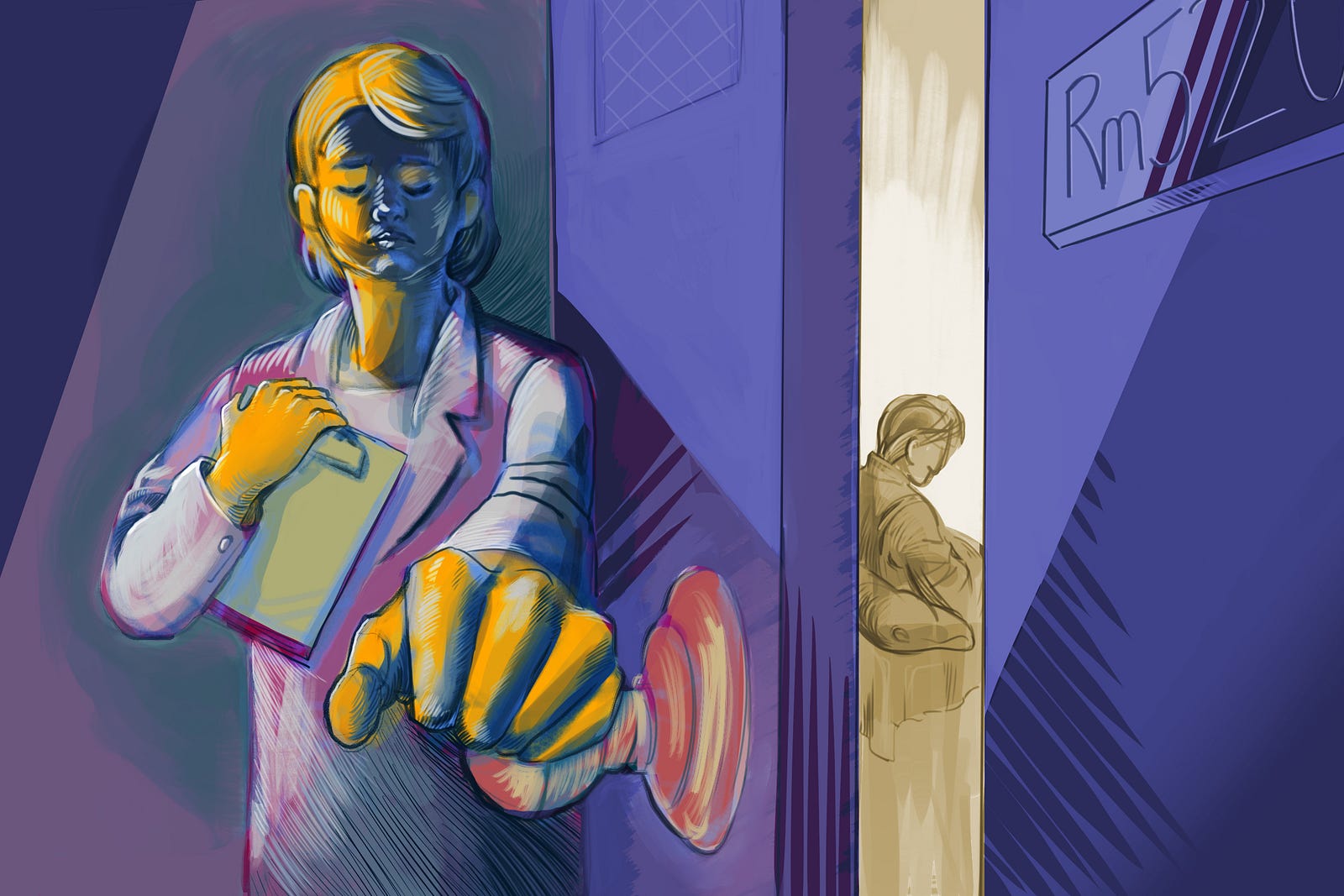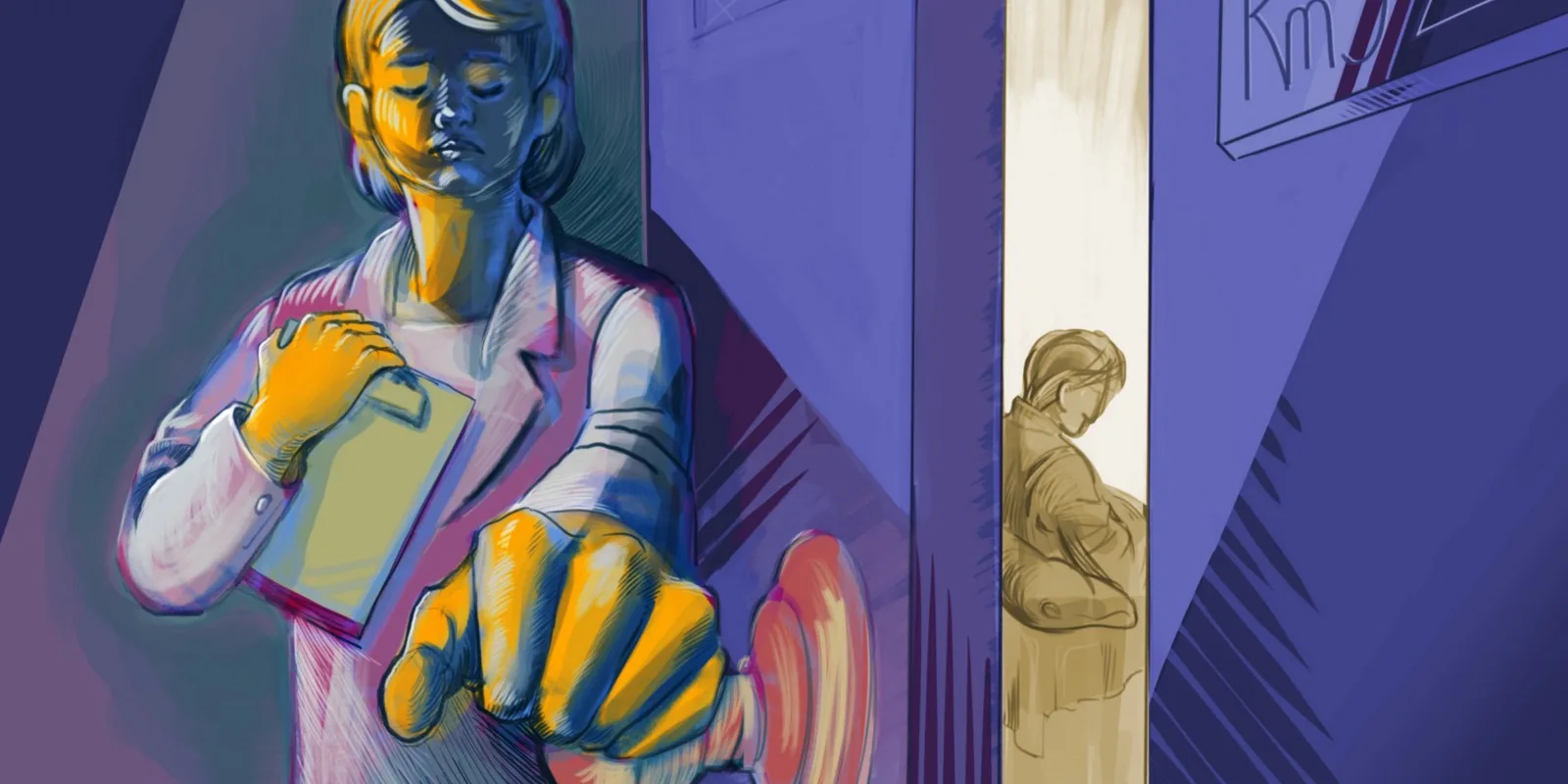
As a surgical intern, I was thrilled to finally drop the “student” and introduce myself as “doctor.” It meant taking responsibility for the person in front of me. I readied myself for high emotions and challenges and hoped for joyful encounters, too.
There are so many firsts as a new doctor: the first time they hand you your pager and then the first time it rings. I panicked as the pages piled in as I stress ate a cold Starbucks grilled cheese sandwich. Mostly, I panicked because I had no idea how to click between pages, no clue how to delete a page, and definitely missed the class in medical school on medication dosing, insulin sliding scales, and how much oxycodone actually works. I knew the tone the nurse used when they asked “Are you sure you want to do that?” meant that I was likely making a bad call, but after the first few nights covering overlapping surgical services, I started to get the hang of it.
Learning to place orders is confusing (and certainly painful for the pharmacist trying to track every erratic move you make) but the patient conversations are much more complex. The first time you consent a patient for a vaguely familiar procedure, answer questions from a long list a family member has scribed, or help a patient to manage their post-operative pain, you walk in with a knot in your stomach. I remember a chief resident instructing me to “say things with confidence” as patients want definitive doctors. Made sense. I coupled his theory with the priceless patient-centered skills I learned in medical school and felt myself forming a routine.
Then came Mrs. G and her daughter. The page came at a busy time. The patient and her family wanted an update. She was admitted post-operatively and recovering well from a thoracic surgery. I went in with no expectations and surprisingly no knot. I met a daughter with an unfriendly look on her face but smiled anyway and introduced myself, “Hi, I’m Dr. Williamson, one of the surgery interns helping in your care.” She looked at her notebook and wrote down my name, asking for spelling. She berated me for taking a long time to come to see her mother, using her notebook as a guide noting the time paged, the time I called back, and the time I walked in the door. I understood and apologized, promising to address her pain. Then she started down the list of questions and concerns — I tried my best to answer immediately or find answers. She paused to write the answers, asking for clarifications on detail after detail. It was not going well. I started to get upset as my pager went off and I could feel the work needed for other patients starting to build. She pressed on and seemed angrier. I didn’t understand as I was doing all I could to help. How could they be so selfish?? That night, I put myself in their shoes — afraid, tired, in pain — and tried not to hold their anger against them.
Then it happened again the next night, and the next. It became like clockwork. Finally, after a week — it hit me. I didn’t like Mrs. G and her daughter! I was shocked! Mostly because I didn’t realize this was possible. I didn’t know that doctors don’t like all of their patients. I thought even in tough times I would always have a depth of empathy capable of understanding all of my patients. I was disappointed that this wasn’t the case.
It became work to go to Mrs. G’s room night in and night out. I told my chief resident how I felt when he saw my face after getting paged to room 520 again. He told me a story that was likely fabricated, but effective. It was about a famous and also intolerable person who was hospitalized and very sick. He was mean to everyone that cared for him. Providers stopped going into the room. He died there one night in his sleep. Moral of the story — the patient you want to see the least, needs you the most.
I made it to the room the next night, pre-page. Mrs. G’s status was declining. Her daughter looked softer. She opened up the notebook and read what she wrote about me the first day we met — “Dr. Williamson — pretentious, apathetic.” I was shocked and didn’t think I had EVER been described that way. She then told me she enjoyed watching me bond with her mom in this difficult situation and saw me developing into an excellent physician. Her mom smiled.
Mrs. G got worse that night. Nasal cannula oxygen led to bipap and when she and her family decided not to proceed with intubation, it became clear that she would pass away. She held my hand, smiled and winked — mouthing that she was “fine” as I held back tears.
She was the first patient I pronounced dead. I had to learn how to do it — “you just check for a pulse or breath sounds” my chief explained. First death certificate I signed.
What I remember most about Mrs. G was how imperfect our interaction was and how little it had to do with the mistakes I thought I would make — wrong medication doses or a procedure gone bad. Our relationship was rocky, our attitudes clashed, and the clinical outcome was not what any of us wanted. It was imperfect but it taught me the importance of being honest with yourself about the way you feel when you interact with others, especially patients. This will help you to both forgive yourself and others such that you can form powerful and needed relationships during difficult situations. It was a first in many ways but certainly not a last as the human interactions in medicine are part of the healing we do every day.
Theresa Williamson, MD is a Doximity Scholar, Neurosurgical Resident at Duke University Hospital and Researcher at the Duke Margolis Health Policy Center. She focuses on decision- making and physician-patient communication in neurosurgery. Recognizing that neurosurgery is a complex and stressful field, she aims to advocate for both patients and physicians in her writing. For more, follow her on twitter @twilli7. The patient story presented represents a compilation of patient interactions, but no individual patient. All possibly identifying details were changed for the purpose of privacy.







